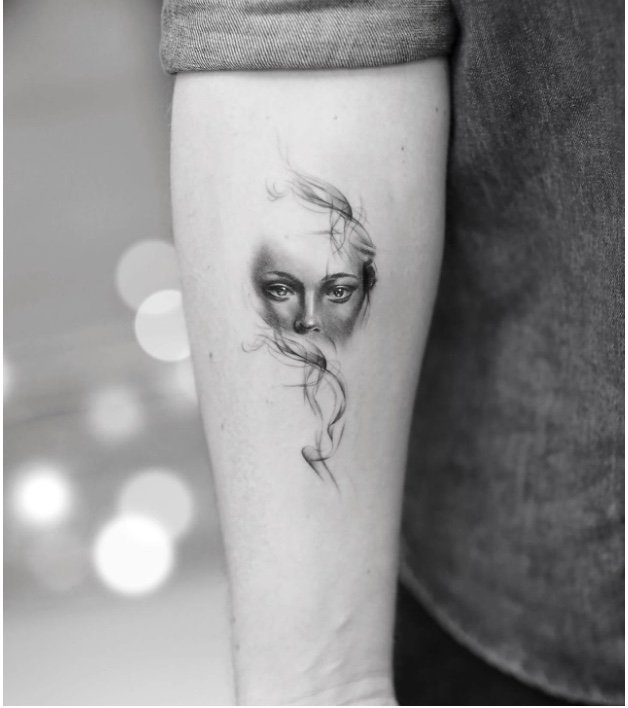Tattoo Location: Tips for Choosing the Right Area
Realizzato da Alex Aureo @aureoroma
When deciding to get a tattoo, one of the most common questions is, "Does it hurt?" While the question may seem obvious—tattooing involves needles, after all—the answer depends on several factors, including the placement of the tattoo.
The location of your tattoo plays a huge role in your overall experience, affecting pain levels, healing, aftercare, and even how your tattoo looks years down the road. With a little preparation and knowledge, you can transform your tattoo session into a more comfortable experience and ensure the design is something you’ll cherish forever.
Here’s everything you need to know about tattoo placement and what factors to consider before booking your appointment.
Realizzato da Alex Aureo @aureoroma
Why Tattoo Placement Matters
The placement of your tattoo isn’t just about aesthetics—it impacts pain, aftercare, and longevity. Here’s why:
1. Aftercare and Healing
Proper aftercare is essential to prevent infection and ensure your tattoo heals properly. However, tattoos in areas where the skin bends, stretches, or rubs—like wrists, elbows, or knees—can take longer to heal and are more prone to distortion over time.
Tattoos in areas that are constantly covered (e.g., feet inside shoes or lower back under tight waistbands) can also face challenges. These areas often trap moisture and heat, which can prolong healing or affect the ink.
Realizzato da Davide @aureoroma
2. Visibility and Coverage
Although tattoos are more socially accepted today, there are still workplaces or social settings where visible tattoos might not be ideal. If discretion is important to you, opt for areas that are easy to cover, such as the upper arms, back, or thighs. On the other hand, high-visibility placements like wrists and forearms may require investing in covering makeup or strategic clothing.
Realizzato da Anna @aureoroma
3. Durability and Longevity
Sun exposure and rubbing are the two biggest culprits for tattoo fading. Areas like the forearms or shoulders that are frequently exposed to the sun may lose sharpness over time, especially without proper sunscreen. Similarly, tattoos in areas prone to friction (e.g., inner thighs, under bra straps, or between fingers) may fade faster due to constant rubbing.
Realizzato da Alex Aureo @aureoroma
Tattoo Pain: What to Expect
Getting a tattoo involves a needle piercing the dermis layer of the skin—essentially creating a controlled wound. Pain levels depend on the density of nerve endings, thickness of skin, and proximity to bone.
Realizzato da Alex Aureo @aureoroma
Most Painful Tattoo Areas
These areas are generally the most painful to tattoo:
Rib cage: Thin skin and lack of fat make this area very sensitive.
Spine and sternum: Tattoos here can feel intense due to the proximity to bone and nerve endings.
Hands, feet, and fingers: These areas have thin skin and many nerve endings, making them especially painful.
Head and behind the ears: The needle's vibration against the skull can feel like a drill.
Groin, nipples, and armpits: High concentration of nerve endings equals high discomfort.
Realizzato da Davide @aureoroma
Least Painful Tattoo Areas
If you’re nervous about pain, choose areas with thicker skin, more fat padding, or fewer nerve endings:
Outer shoulder: A dull, aching sensation rather than sharp pain.
Outer thigh and buttocks: Thick skin and fat make these areas ideal for comfort.
Upper back (away from the spine): Perfect for large tattoos with minimal discomfort.
Forearm: Great for first-timers, with thick skin and fewer nerve endings.
Realizzato da Giorgia @aureoroma
Tips to Make Tattooing Less Painful
Regardless of where you choose to get your tattoo, follow these tips to make the experience more comfortable for both you and your tattoo artist:
1. Avoid Alcohol and Excessive Caffeine
Alcohol and caffeine thin your blood, causing increased bleeding during the session. This can make it harder for the artist to work and may prolong the appointment, increasing discomfort. Stick to hydration with water instead.
2. Stay Rested and Eat
A good night’s sleep and a nutrient-dense meal are critical. Being hungry or tired can amplify the sensation of pain. Bring a snack (like nuts or fruit) and a water bottle, especially for long sessions.
3. Distract Yourself
Bring headphones and listen to music or a podcast to focus on something other than the needle. A supportive friend can also help, but don’t turn your session into a social event—too many people can distract both you and the artist.
Final Thoughts
Tattoo pain shouldn’t deter you from getting the design you’ve always wanted. By considering factors like placement, healing, and long-term appearance, you can ensure your tattoo not only looks amazing but also ages well.
Research your design, choose an artist you trust, and prepare for the experience—and you’ll walk away with a tattoo you’ll love for life








